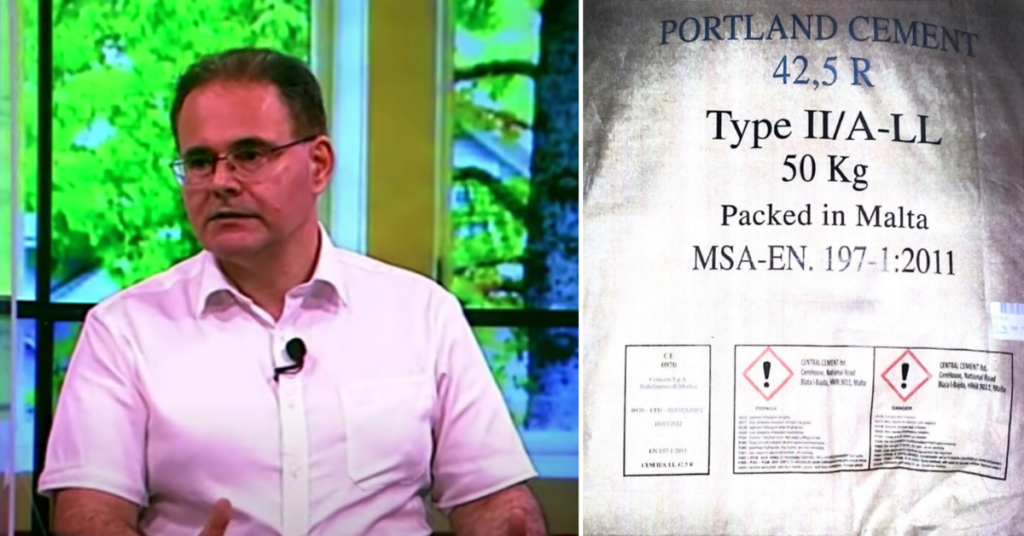‘Wrongly Labelled Cement Impacts Quality Of Our Infrastructure Development,’ Says Malta’s Top Geologist

A majority of Portland cement in Malta is being labelled incorrectly, raising doubts on the quality of cement making its way into infrastructure and homes, Malta’s top geologist Dr Peter Gatt has warned.
Cement is the crucial ingredient in concrete, which makes up the majority of Malta’s newest infrastructure and apartments.
Speaking in an interview with Simon Debono, Grech explained that cement is made by heating limestone and clay to produce several different minerals. The EU Directive on cement has critical standards which oblige the manufacturer to specify the minimum amount of active minerals if it is to qualify as Portland cement.
With the right European label, you can see where the cement is packaged, what the ingredients are, as well as the date of packaging and the classification of cement. The package of cement will read ‘Packed in Malta’, followed by the EU directive 197-1 and the year it was packed in.
Since 2006, the EU has required countries to label cement according to certain standards. ‘We have to follow the EU standards for labelling cement,’ Gatt says.
The EU Directive specifies 27 different types of cement which are grouped into five classes of cement, labelled CEM I to CEM V. Every bag of cement should be labelled as such, stating ‘CEM I’ or ‘CEM II’ – but it turns out this often doesn’t happen in Malta.
In reality, most cement is labelled wrongly, consisting of part American standard – which uses the Type I to Type V classification – and part EU Directive. This makes the label a hybrid of American and EU standards, which ultimately means nothing, relating to neither American nor European standards.
And if cement is labelled wrongly, developers don’t know what exactly they are getting.
Using a metaphor to illustrate the confusion the wrong labels can cause, Gatt compares the sacks of concrete to cars. ‘Imagine you go to buy a car and on the front it says Hyundai but on the back it says Fiat. What kind of car are you buying?’
Malta is the only country where such a large amount of cement is labelled incorrectly, according to Gatt. The EU supposedly keeps a check on whether countries label their concrete correctly, but it is the State Authorities that are eventually responsible.
‘We can’t be sure if anyone’s actually checking the content of the bags of cement, especially when the label is wrong,’ Gatt said.
The ambiguity surrounding the labelling of concrete affects national infrastructure and individual households alike, as it influences the quality and durability of the concrete.
You can have great infrastructure, but if you do not know what the material used actually is, there are going to be issues.
What do you make of this issue?
